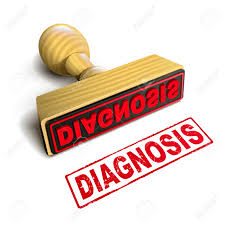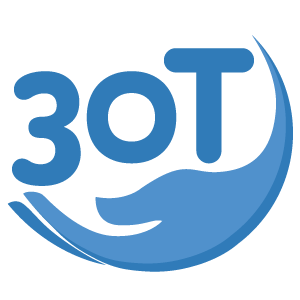Diagnosis

A diagnosis of Cerebral Palsy will come only after several evaluations, observations and tests are performed. Checklists similar to the one below are used to assess and diagnose the type and severity of the CP. The condition varies in terms of the the number of limbs affected and one of the four types of brain damage that may have caused the condition.
Cause of Cerebral Palsy
▢ Hypoxic-Ischemic Encephalopathy, or HIE – Lack of oxygen to the brain or asphyxia
▢ Intracranial Hemorrhage, or IVH – Brain Hemorrhage
▢ Periventricular Leukomalacia, or PVL – Damage to white matter tissue in the brain
▢ Cerebral Dysgenesis – Brain malformation, abnormal brain development
Time Brain Damage Occurrence
▢ Acquired Cerebral Palsy – The child did not have Cerebral Palsy at the time of birth. Cerebral Palsy was acquired after birth, but before brain was fully developed.
▢ Congenital Cerebral Palsy – The child was born with the condition. Brain damage occurred during pregnancy, at birth, or immediately after birth.
▢ Genetic Predisposition to Cerebral Palsy – Cerebral Palsy is not considered to be hereditary, but hereditary conditions predisposed the child to Cerebral Palsy.
▢ No Cerebral Palsy – The brain damage occured after the brain has fully developed causing impairment similar to Cerebral Palsy, but is clinically identified by the actual cause.
▢ Not Determined – Timing of brain damage has not yet been determined.
Severity Level
▢ Mild – Cerebral Palsy means a child can move without assistance. Their daily activities are not limited.
▢ Moderate – Moderate Cerebral Palsy means a child will need braces, medications, and adaptive technology to accomplish daily activities.
▢ Severe – Severe Cerebral Palsy means a child will require a wheelchair and will have significant challenges in accomplishing daily activities.
Topographical Distribution
Extent:
▢ Paresis means weakened
▢ Plegia means paralyzed
▢ Monoplegia/Monoparesis means that only one limb is affected. It’s thought that this may be a form of hemiplegia/hemiparesis where one limb is significantly impaired.
▢ Diplegia/Diparesis usually indicates that the legs are affected more than the arms. Primarily lower body involvement.
▢ Hemiplegia/Hemiparesis indicates that the arm and leg on one side of the body is affected.
▢ Paraplegia/Paraparesis means the lower half of the body, including both legs, are affected.
▢ Triplegia/Triparesis indicates that three limbs are affected. This could be both arms and a leg, or both legs and an arm. Or, it could refer to one upper and one lower extremity and the face.
▢ Double Hemiplegia/Double Hemiparesis indicate that all four limbs are involved, but one side of the body is more affected than the other.
▢ Tetraplegia/Tetraparesis indicates that all four limbs are involved, but three limbs are more affected than the fourth.
▢ Quadriplegia/Quadriparesis means that all four limbs are involved.
▢ Pentaplegia/Pentaparesis means that all four limbs are involved, with neck and head paralysis often accompanied by eating and breathing complications.
Motor Functions
Muscle Tone:
▢ Hypertonia — increased muscle tone often resulting in very stiff limbs. Hypertonia is associated with spastic Cerebral Palsy
▢ Hypotonia — decreased muscle tone often resulting in loose, floppy limbs. Hypotonia is associated with non-spastic Cerebral Palsy Spasticity:
▢ Spastic (Pyramidal) – Spasticity means increased muscle tone. Muscles continually contract making limbs stiff, rigid, and resistant to flexing or relaxing. Reflexes can be exaggerated and movements jerky and awkward.
▢ Non-Spastic (Extrapyramidal) – Non-spastic Cerebral Palsy is decreased and/or fluctuating muscle tone. There are multiple forms, each characterized by particular impairments. One of the main characteristics of non-spastic Cerebral Palsy is involuntary movement. Movement can be slow or fast, often repetitive, and sometimes rhythmic.
▢ Mixed – It is common for a case to involve both spastic and non-spastic Cerebral Palsy. When a child’s impairments fall into both categories, it is considered mixed Cerebral Palsy. The most common form of mixed Cerebral Palsy sees some limbs affected by spasticity and others by athetosis.
Non-Spastic Sub-Categories:
▢ Ataxic – Ataxic Cerebral Palsy affects coordinated movements. Balance and posture are involved. Walking gait is often very wide, and possibly irregular. Control of eye movements and depth perception can be impaired. Often fine motor skills requiring coordination of the eyes and hands, such as writing, are made difficult.
▢ Dyskinetic – Dyskinetic Cerebral Palsy is separated further into two different groups; athetoid and dystonic. Athetoid Cerebral Palsy includes the cases with involuntary movement, especially in the arms, legs, and hands. Dystonic Cerebral Palsy encompasses the cases that affect the trunk muscles more than the limbs, and results in fixed, twisted posture.
▢ Athetosis — slow, writhing movements that are often repetitive, sinuous, and rhythmic.
▢ Chorea — irregular movements that are not repetitive or rhythmic, and tend to be more jerky and shaky.
▢ Choreoathetoid — a combination of chorea and athetosis, where the movements are irregular, but twisting and curving.
▢ Dystonia — involuntary movements accompanied by an abnormal, sustained posture.
▢ Ataxia — does not have to do with involuntary movements, but instead indicates impaired balance and coordination.
Gross Motor Function Classification System
▢ GMFCS Level I. Walks without limitations.
▢ GMFCS Level II. Walks with limitations. Has limitations walking long distances and balancing. Not as able as Level I to run or jump. May require use of mobility devices when first learning to walk, usually prior to age 4. May rely on wheeled mobility equipment when outside of home for traveling long distances.
▢ GMFCS Level III. Walks with adaptive equipment assistance. Requires hand-held mobility assistance to walk indoors, while utilizing wheeled mobility outdoors, in the community and at school. Can sit on own or with limited external support. Has some independence in standing transfers.
▢ GMFCS Level IV. Self-mobility with use of powered mobility assistance. Usually supported when sitting. Limited self-mobility. Likely to be transported in manual wheelchair or powered mobility.
▢ GMFCS Level V. Severe head and trunk control limitations. Requires extensive use of assisted technology and physical assistance. Transported in a manual wheelchair, unless self-mobility can be achieved by child learning to operate a powered wheelchair.
▢ Other ____________________
▢ None
Orthopedic Impairment Assessment
▢ Muscle Tone
▢ Movement Coordination and Control
▢ Reflexes
▢ Posture
▢ Balance
▢ Gross Motor Function
▢ Fine Motor Function
▢ Oral Motor Function
Associative Conditions and Co-Mitigating Factors
▢ Behavior
▢ Cognition
▢ Communication
▢ Developmental Delay
▢ Digestive Health
▢ Dysphagia
▢ Hearing
▢ Mobility
▢ Neurological Health
▢ Nutrition Health
▢ Oral Health
▢ Orthopedic Health
▢ Respiratory Health
▢ Seizure Control
▢ Sensory
▢ Skin Health
▢ Socialization
▢ Vision

The Goals
Ben Nevis Climb 27th August 2016